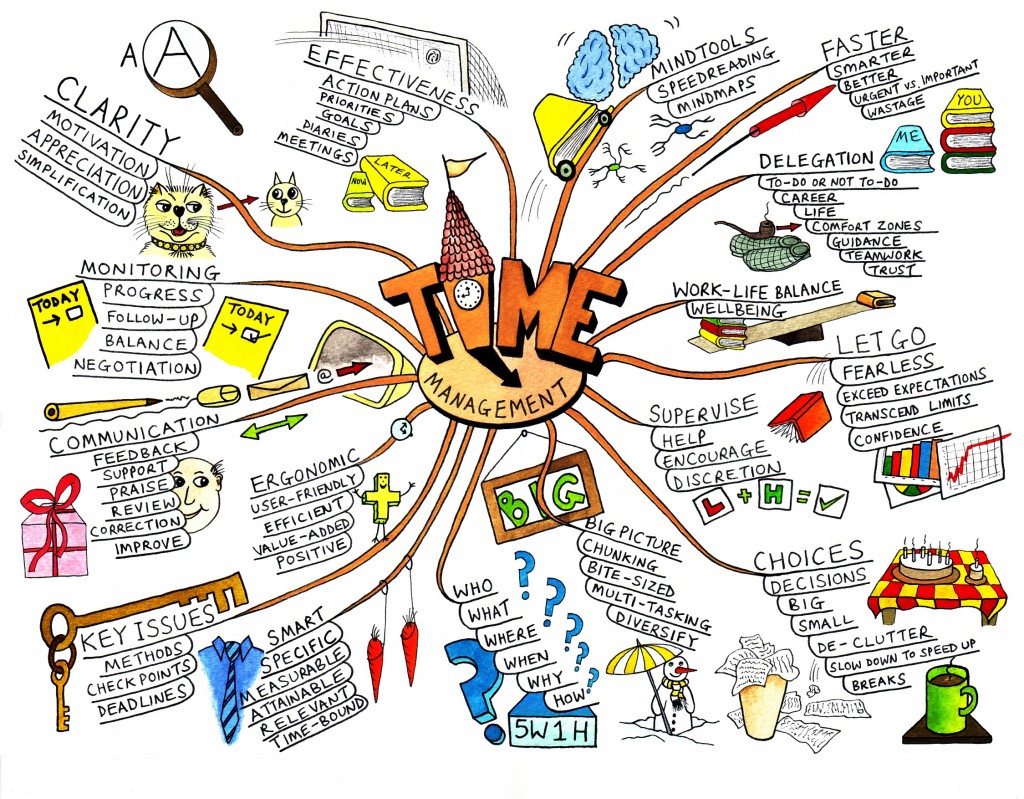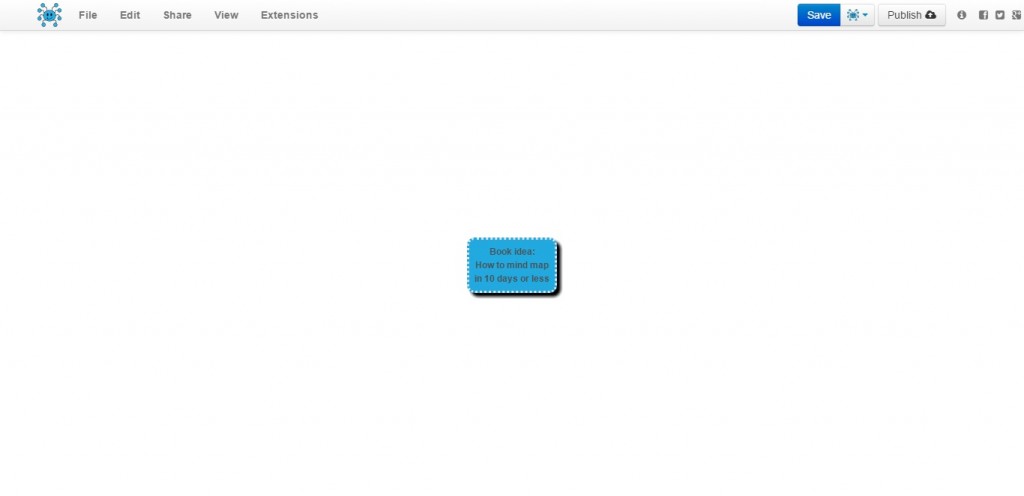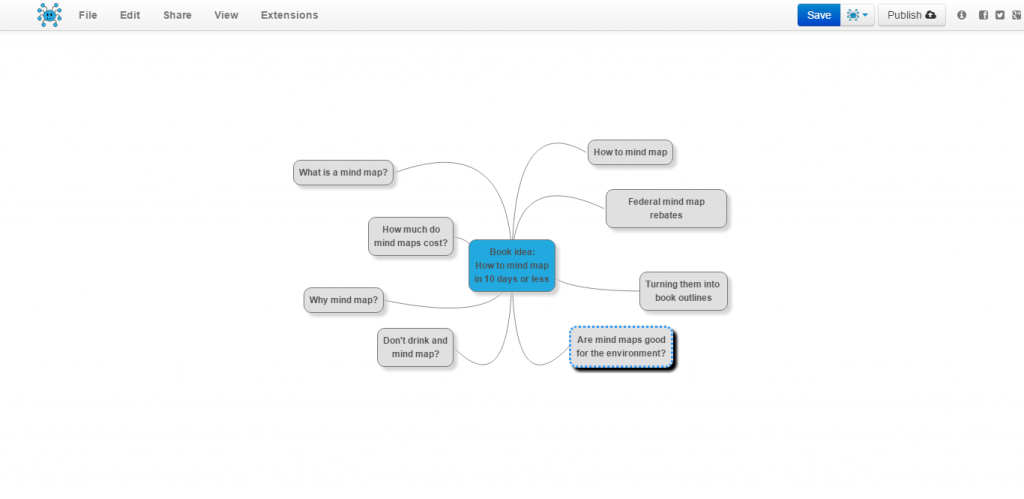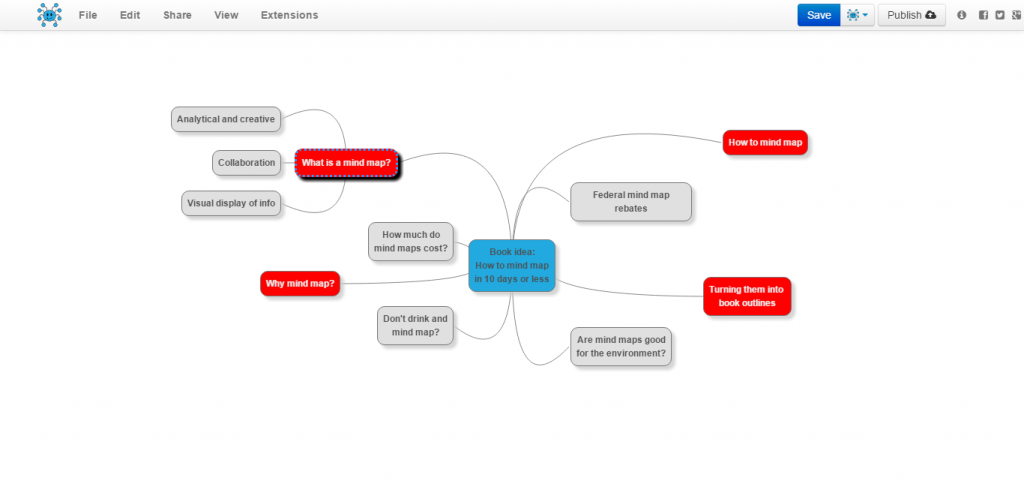
Books take us to new worlds–but when we’re writing them without a clear plan in place, it’s easy to overshoot the intended destination and get lost somewhere between Polaris and Ursa Major. To properly navigate the writing of our book, we need a solid outline–in essence, the itinerary for our writing voyage. And what better way to plot out an itinerary than by using a mind map.
Simply put, a mind map is a tool to capture and organize ideas, often in the form of a spider diagram. You might remember making them in elementary school, when they probably looked like this:
Of course, if you’re anything like me, they looked a lot messier (and had fewer cats) but the objective is the same, no matter your personal style: you put a central idea in the middle of the board and branch off into as many related ideas as you can come up with. By recording your ideas visually, you engage both the analytical and creative parts of the brain, and this, combined with the free-flow, power-of-association nature of brainstorming, you troll the deepest crevices of your subconscious where–like angler fish–the most original ideas lie.
When it comes to writing books, this is a great way to expand and organize your ideas, allowing you to work background information and subtle nuances into the right place in the book’s structure even before you begin writing. I’ve personally suffered the dispiriting experience of writing 15,000 words on a subject only to realize I’d forgotten an essential point 6,000 words back. I had to stop writing, circle back and wrestle with my manuscript to weave the missing idea into the book: Not fun. If I’d done a mind map, one glance at the page would have shown me the obvious missing link, minimizing my writing’s PITA factor.
Once everything is laid out in front of you, it’s infinitely easier to organize, categorize, and optimize the components of your book. Creating a writing workflow this way is a cinch, even for the largest of projects. And when you use mind maps for collaboration, the power is increased exponentially. With you and your writing partner building off each other’s ideas, your map will take you to places you’ve never dreamed of.
Mind mapping your book
To start your mind map, choose a medium for it. A horizontal piece of paper will do fine, or you can write your ideas on Post-It notes so you can move them around freely as you organize your thoughts. For more comprehensive mapping, try making your map in Powerpoint or with free software such as MindMup.
In the center of your blank slate, write your topic, like this:
Next, think of all the related ideas you can come up with about your topic:
Then, pick your favourite and delve deeper into each of those ideas:
And don’t worry if something kinda dumb makes its way onto the page–mind maps are judgment-free exercises. Besides, this is not the time for perfectionism–get messy! It’s better to get the ideas out quickly and organize them later than to get derailed over the tidiness of your penmanship.
There’s no single “right” way to do the mind-mapping process, so have a little fun with it. If you want to draw pictures, go ahead! If you like to list everything you can think of and then move the items around, go for it. The world of your mind is your oyster.
Your mind map is a living document, so if you come up with a great question or idea later, tack it on. By immediately slotting new thoughts into the mind map, you’ll prevent them getting lost in the noise of a to-do list or running notes section.
After mapping out your ideas this way, you’ll be a big step closer to a book outline that will let you launch full-steam ahead into writing without getting lost in the wilderness. For more on book outlines, sign up to our mailing list where you’ll be the first to hear about our latest posts on writing tips, inspiration, and more.
- Lindsay Sealey’s Growing Strong Girls Gives Hope to Parents Under Pressure - September 7, 2017
- What I Learned About Confidence from Writing Growing Strong Girls: A Guest Post from Lindsay Sealey - September 7, 2017
- LifeTree’s Summer Reads - August 17, 2017



